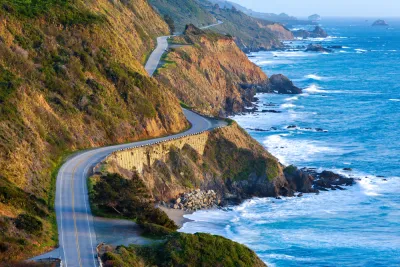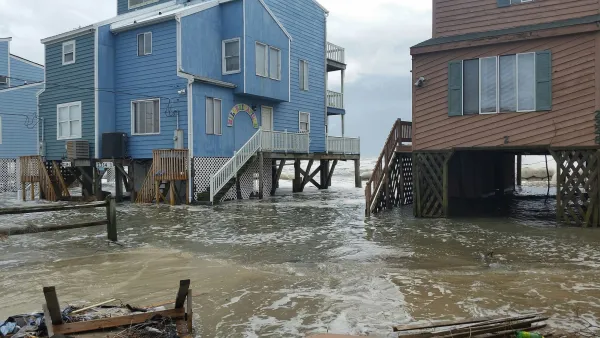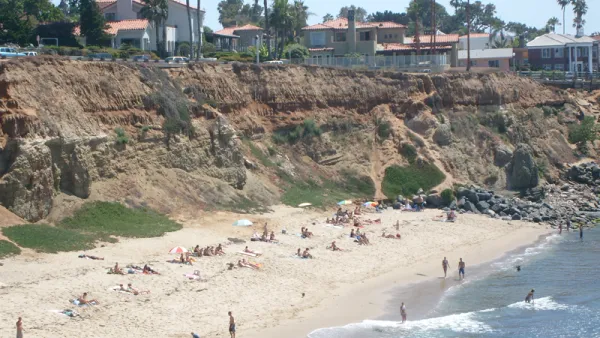The commission spent a significant part of last year in the spotlight. Now, its new director is moving ahead on climate adaptation and resilience efforts as a federal policy change looms.

The California Coastal Commission made waves last year when the dismissal of its longtime leader sparked alarm that the body charged with protecting coastal lands was becoming increasingly pro-development. In an in-depth interview with The Planning Report, the new director—commission veteran Jack Ainsworth—dispels any such notions and points to the bigger threats he sees facing coastal preservation in the United States.
The Trump Administration's plan to permit offshore drilling is "a significant concern," he says, not least because it reflects "a narrative that climate change is not happening and sea-level rise is not an issue.” (In fact, Ainsworth sees sea-level rise as "the most significant planning challenge we have ever faced.")
Another concern: that the administration may move to weaken the Coastal Zone Management Act, which authorizes many of the commission's activities, and cut funding for coastal programs. Until now, Ainsworth says, "Coastal protection has always been a bipartisan issue."
Meanwhile, the commission is soldiering on in service of preserving California's shores—partnering with local governments, the state parks department, and the California Transportation Agency on comprehensive climate adaptation planning. Ainsworth also takes an active interest in housing affordability and transit access, advocating for increased urban density that cautiously avoids impacting sensitive coastal environments.
Providing housing for all people of all income levels along our coastline is critically important. We see a lot of people who have to take long bus rides to get to work in the coastal areas. It is a public access issue, and also an environmental justice issue, to ensure that people who work in those communities are able to live in those communities … It’s also important to create transit connections to get people to the coast who may not be able to afford to drive there.
The Planning Report interview also covers desalination plants coming to Southern California, the latest on the controversial Newport Banning Ranch project, and more.

National Parks Layoffs Will Cause Communities to Lose Billions
Thousands of essential park workers were laid off this week, just before the busy spring break season.

Retro-silient?: America’s First “Eco-burb,” The Woodlands Turns 50
A master-planned community north of Houston offers lessons on green infrastructure and resilient design, but falls short of its founder’s lofty affordability and walkability goals.

Delivering for America Plan Will Downgrade Mail Service in at Least 49.5 Percent of Zip Codes
Republican and Democrat lawmakers criticize the plan for its disproportionate negative impact on rural communities.

Test News Post 1
This is a summary

Test News Headline 46
Test for the image on the front page.

Balancing Bombs and Butterflies: How the National Guard Protects a Rare Species
The National Guard at Fort Indiantown Gap uses GIS technology and land management strategies to balance military training with conservation efforts, ensuring the survival of the rare eastern regal fritillary butterfly.
Urban Design for Planners 1: Software Tools
This six-course series explores essential urban design concepts using open source software and equips planners with the tools they need to participate fully in the urban design process.
Planning for Universal Design
Learn the tools for implementing Universal Design in planning regulations.
EMC Planning Group, Inc.
Planetizen
Planetizen
Mpact (formerly Rail~Volution)
Great Falls Development Authority, Inc.
HUDs Office of Policy Development and Research
NYU Wagner Graduate School of Public Service





























